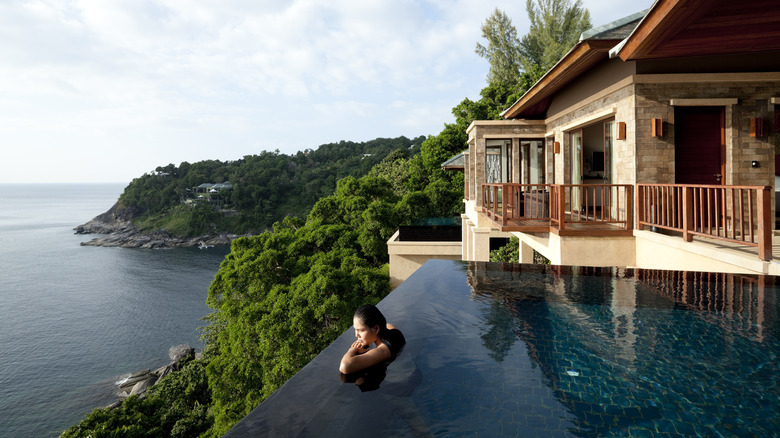A Five-Star Rating Doesn't Always Mean Ultra-Luxury (Here's What Travelers Should Know)
Most hotel-goers book a five-star hotel expecting certain luxuries: bellhops with white gloves, a personal butler, or marble lobbies. However, five-star ratings don't necessarily deliver these expectations. Travelers should be aware that disparities between five-star hotels around the world exist, and knowing what these ratings measure can help curb high expectations when that anticipated bottle of champagne in your room is a no-show.
So here's the gist: not all five-star hotels are created equal. If you've ever been surprised at the differences between a five star-rated hotel experience in the United States and Europe or Asia, it's because these ratings depend on the criteria set by different organizations. One doesn't have to check into the most expensive hotels and hotel rooms across the world for a five-star hotel experience — a consistent delivery on high standards and service can also define a luxurious five-star property.
In the U.S., the 1958 Mobil Travel Guide (now Forbes Travel Guide) established a five-star hotel rating system, defining luxury hotels' amenities and services on a one-to-five-star scale. However, its standards don't necessarily align with the AAA's (American Automobile Association), which has its own criteria for rating a Diamond experience. In Europe, ratings depend on the Hotelstars Union, where specific hotel and room amenities set apart a 1-star hotel (think basic blackout curtains and towel changes) from 5-star lodgings which offer room service and valet parking. Down under, Australia-based Star Ratings measures international hotels according to its own set of standards on cleanliness, quality, and hotel conditions. Dating back to the 1920s, the Michelin Guide awards hotels that meet its architecture, interior design, quality, service consistency, and value standards with prestigious one to three Key ratings.
How five-star hotel experiences vary around the world
Luxury hotels trace their roots to the sumptuous European palaces aristocrats and monarchs resided and welcomed their guests in, establishing standards for what luxury hospitality should embody. Several historic properties continually stand out as icons of luxury: Ritz Paris on Place Vendôme echoed the fit-for-a-king atmosphere of royal residences when it was founded in 1898; London's glamorous Art Deco-style Claridge's, opened in 1856, sits among the world's best hotels; while Singapore's Neo-Renaissance Raffles Hotel has kept its distinct heritage through numerous renovations since it opened in 1887.
However, the disparity between five-star properties in America and those in Asia or Europe can be chalked up to geographic, spatial, and cultural differences. If you expect the same U.S. king-sized bed or a luxurious Asian resort-style infinity pool at your five-star-rated Parisian hotel, you're bound to be disappointed. Hotel amenities aren't a global standard, but are instead adapted to each country.
While luxury hotels in the U.S. prioritize room size and the number of restaurants, European five-star hotels are often housed in historic, centuries-old properties adapted to modern standards, featuring smaller rooms and atypical layouts. Where luxury means extensive hotel gym equipment in the U.S. or elaborate breakfast buffet set-ups in Asia, European hotels typically emphasize curated, culturally centred experiences for their guests, such as scenic jogging paths through historic parts of the city or traditional culinary offerings. In warm, sunny countries, guests expect luxurious hotel pools in a five-star hotel, while many prestigious European hotels don't have swimming pools due to space and climatic constraints. Some hotels, like Dubai's Burj Al Arab, are claiming even higher ratings by marketing themselves as seven-star hotels, though such a designation remains unofficial.

